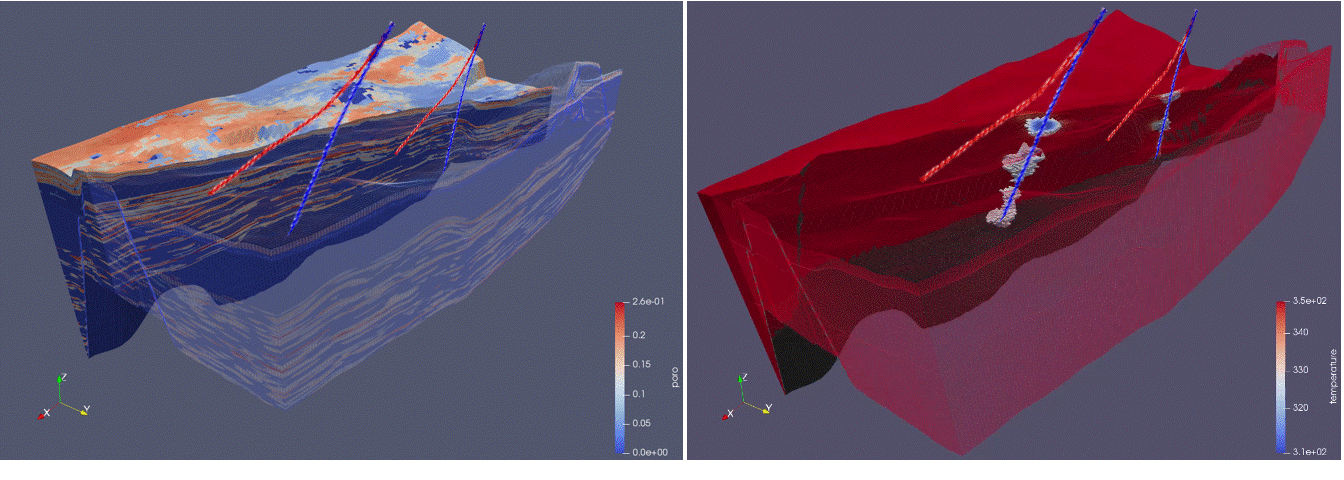A low-enthalpy geothermal reservoir with complicated realistic sedimentary distribution located in the West Netherlands Basin is utilized to perform sensitivity analysis4. A porosity distribution of the model is displayed in Fig.3. The model mainly consists of Berkel and Delft sandstone (around 0.8 million grid blocks) and shale layers (approximately 2.4 million grid blocks) with several faults. One of the major outcomes from the analysis is the shale layers, which are generally ignored in numerical simulation of hydrocarbon reservoirs, can significantly extend the lifetime (time before thermal breakthrough) of geothermal reservoirs. The results demonstrate the sensitivity of doublet lifetime to these parameters varies from years to decades.

Fig.3: Porosity distribution and thermal front propagation of realistic geothermal reservoir.
The high numerical performance of DARTS makes it possible to run a large ensemble of models at high geological resolution for uncertainty quantification. Besides, the influence of various production regimes (well placement, production rate, etc.) and geological parameters (overburden, permeability-porosity correlation, etc.) to the heat production and doublet lifetime are shown in Fig.4. In overall, spatial heterogeneity of facies in geothermal reservoirs introduces large variability in energy production and demand uncertainty quantification for an accurate prediction of technologic and economic parameters of the process.

Fig.4: Variation of the
